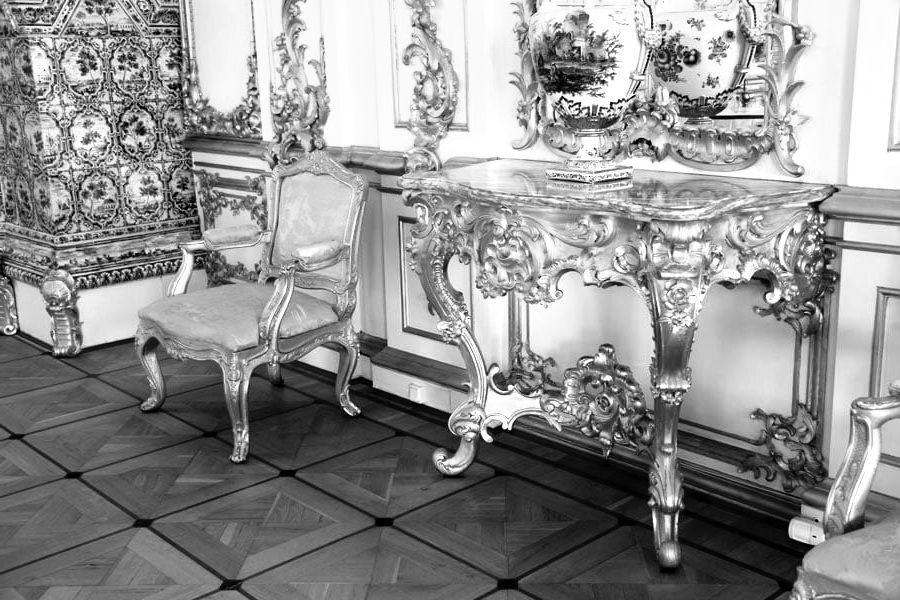Catherine the Great furniture, who ruled Russia from 1762 to 1796, is celebrated not only for her significant political reforms but also for her exquisite taste in art and design. Her furniture collection reflects the opulence of her court, the elegance of Neoclassicism, and her ambition to position Russia as a major cultural center in Europe. This article delves into the history, craftsmanship, and enduring legacy of Catherine the Great furniture.
Table of Contents
The Influence of Neoclassicism
During Catherine’s reign, Neoclassicism emerged as a dominant artistic movement, characterized by a return to the ideals of ancient Greek and Roman art. This style prioritized symmetry, proportion, and simplicity, eschewing the ornate embellishments of the preceding Rococo style. Catherine embraced Neoclassicism, commissioning furniture that embodied these principles while adding a distinctly Russian flair.
Neoclassical furniture pieces associated with Catherine often featured clean lines, refined ornamentation, and an overall sense of balance. She aimed to convey both sophistication and strength through Catherine the Great furniture choices, reflecting her vision of an enlightened and modern Russia. Her use of classical motifs—such as laurel wreaths, columns, and mythological figures—further emphasized the grandeur of her reign.

A Reflection of Power
Catherine understood the significance of furniture in asserting her authority. The pieces she commissioned served not only as functional items but also as symbols of power and prestige. Grand state rooms in her palaces featured elaborately designed furniture that set the tone for receptions and official events.
For instance, the Grand Hall of the Catherine Palace showcased opulent furniture, including gilded armchairs and massive marble-topped tables. The high-backed throne chairs were particularly significant, designed to project an image of regal authority during ceremonies. Each piece was strategically placed to create an atmosphere of control and grandeur, enabling Catherine to effectively manage her court while impressing foreign dignitaries.
Craftsmanship and Artisanship
Catherine the Great furniture collection reflects an unparalleled commitment to craftsmanship. She employed skilled artisans, both local and from across Europe, fostering an environment where creativity and quality flourished. These craftsmen incorporated intricate techniques, elevating Russian furniture-making traditions to new heights.
Mahogany became a favored material for Catherine’s furniture, prized for its rich color and durability. Artisans utilized gold leaf, porcelain accents, and detailed carvings to create stunning pieces. The marquetry—decorative inlays made from various woods—added depth and elegance, making each item a work of art.
Catherine’s passion for quality led her to support collaboration between Russian craftsmen and European artisans. This cross-cultural exchange resulted in furniture that combined traditional Russian styles with innovative European designs. The outcome was a unique aesthetic that continues to captivate collectors and historians today.
Iconic Pieces of Catherine the Great Furniture
Several pieces from Catherine’s collection have become iconic representations of her reign and style. Each of these items reflects her taste for luxury and her vision for Russia’s cultural identity.
The Lacquered Cabinet
One of the most remarkable pieces is the lacquered cabinet, known for its intricate detailing and vibrant colors. The cabinet features scenes from Russian folklore and mythology, beautifully painted on its surface. This piece embodies Catherine’s desire to blend Russian tradition with European artistic influences.
The Gilded Sofa
Another standout is the gilded sofa, upholstered in luxurious fabrics such as silk and velvet. The sofa’s elaborate carvings, featuring floral and leaf motifs, showcase the artistry of the craftsmen who created it. This piece not only provided comfort but also served as a statement of opulence in the grand drawing rooms of her palaces.
The Writing Desk
Catherine’s writing desk is a testament to her intellectual pursuits and love for literature. The desk features ornate marquetry and compartments for storing writing materials. It served as a workspace for her correspondence and literary endeavors, reflecting her commitment to education and enlightenment.

The Role of Furniture in Court Life
Furniture in Catherine the Great’s palaces played a crucial role in the daily life of the court. Each piece was thoughtfully designed to facilitate various activities, from formal receptions to intimate gatherings. The arrangement of furniture contributed to the social dynamics within her court, influencing interactions between courtiers and guests.
State Functions and Ceremonies
During state functions, furniture was arranged to highlight the grandeur of the occasion. Long banquet tables adorned with exquisite tableware emphasized the wealth of the empire. Chairs for distinguished guests were strategically placed to ensure visibility and prominence, reinforcing social hierarchies.
Intimate Gatherings
Conversely, smaller rooms featured more comfortable seating arrangements, inviting informal discussions. Elegant sofas and armchairs encouraged conversation among friends and advisors, allowing Catherine to build alliances and share ideas in a more relaxed setting. The versatility of the furniture facilitated both grandeur and intimacy, showcasing Catherine’s adeptness at balancing formality with personal connection.
Legacy and Modern Appreciation
Today, Catherine the Great furniture continues to captivate historians, collectors, and design enthusiasts. Many surviving pieces are housed in prominent museums, such as the State Hermitage Museum in St. Petersburg. These items serve as reminders of a remarkable era in Russian history and the significant contributions of Catherine to the world of art and design.
Modern furniture designers often draw inspiration from Catherine’s collection, seeking to capture the elegance and sophistication of her style. Elements of Neoclassicism, such as symmetry and refined ornamentation, remain relevant in contemporary design, highlighting the enduring impact of her vision.
Conclusion
Catherine the Great furniture stands as a testament to her legacy as a powerful ruler and a patron of the arts. Through her exquisite taste and commitment to craftsmanship, she transformed the decorative arts in Russia, creating pieces that continue to inspire awe and admiration. The interplay of function and beauty in her furniture reflects her ambition to establish Russia as a cultural powerhouse.
Catherine’s reign not only reshaped the political landscape but also left an indelible mark on the artistic heritage of Russia. Her furniture collection is a vibrant expression of a time when art, culture, and power converged, ensuring her place in history as one of the most influential figures of the Enlightenment.

FAQs
What style defines Catherine the Great furniture?
Catherine the Great furniture is primarily defined by the Neoclassical style, characterized by clean lines, symmetry, and classical motifs.
Where can one see Catherine the Great furniture today?
Many pieces of Catherine the Great furniture can be found in the State Hermitage Museum in St. Petersburg and other historical museums in Russia.
What materials were commonly used in her furniture?
Catherine’s furniture often featured materials like mahogany, silk, gold leaf, and porcelain, showcasing both durability and luxury.
How did Catherine the Great influence Russian culture?
Catherine the Great significantly influenced Russian culture by promoting the arts, education, and architecture, establishing a cultural identity that blended Russian and European elements.
What role did furniture play in the court of Catherine the Great?
Furniture in Catherine’s court was crucial for both state functions and intimate gatherings, influencing social dynamics and the display of power within the royal household.

